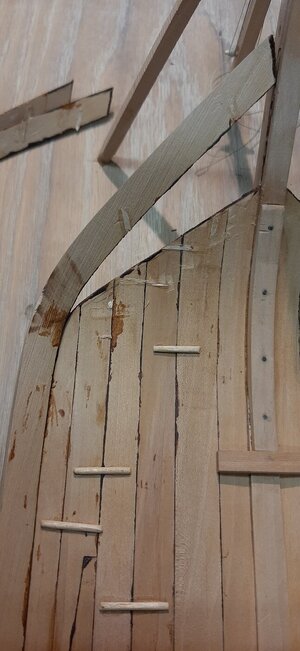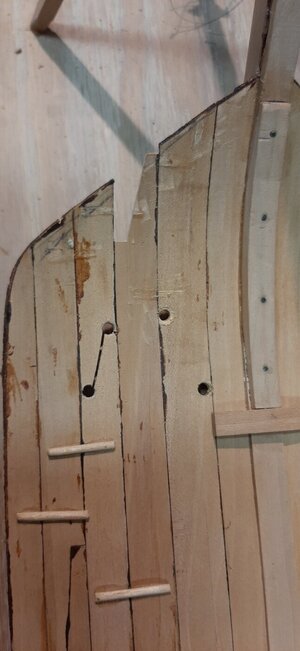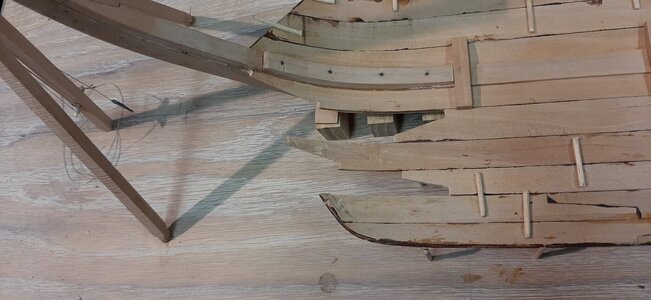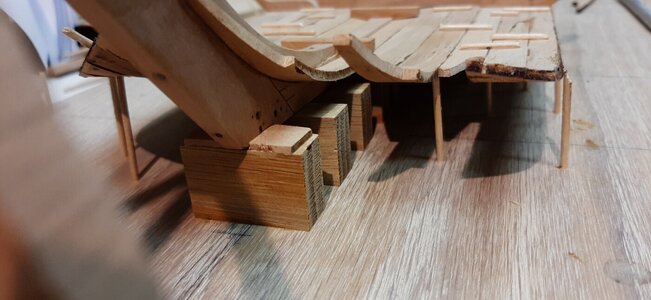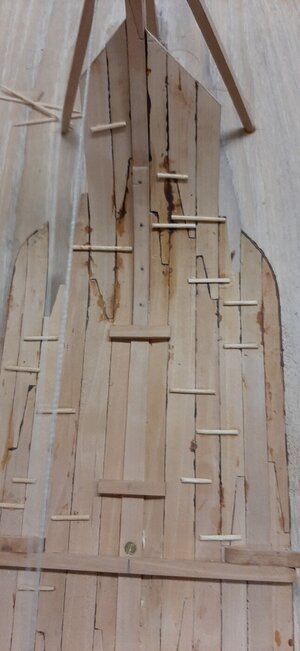I don't make a habit of reacting to pompous critics, but in this case I think I owe the readers an explication of the reason why I advised Maarten to change his beautifully performed experiment. Just as a quick test I produced a paper model after his own design to help him find the shape of his first bilge plank, which as anybody can see had a strange, maybe impossible curve. Trees don't grow like that and certainly not in numbers enough to answer to the needs of so many fluits that were built in the old days. So the hull was done and the shape of the plank was copied from it, producing a remarkable moderate curve:
View attachment 437655
At that moment I looked at the rest of the hull and it struck me that there was an obvious lack of volume in the aft part:
View attachment 437656
Van Yk gives a beautiful method to establish the amount of volume for the aft frame, transformed from the front frame in his set up. It's in my Witsen book and perhaps you know it:
View attachment 437657
It shows the shaping af the aft frame on the basis of the front frame, using both the shape of the master ribband and the amount of the ship lying deeper at the stern. Transformed into the sketch I made for Maarten the difference between his aft frame (the top drawn line) and Van Yk's suggestion (the dotted line) is clear:
View attachment 437658
So I built another model to show what difference it made:
View attachment 437659
Maarten took his own decision to change his model and I appreciate his choice. It will lead to a much better model that the former one.
What bothers me much is that people who should know better write comments like the quote here above, suggesting that I more or less pressed Maarten to change his view on the ship's shape at the cost of the value of his 'archaeological' experiment, only on the basis of some wild theories nobody ever has proven to be right. This is obviously nonsense and the suggestion that I only use theories that totally overlook what daily practice teaches us is simply preposterous. I am very much interested in Maarten's experiment, I did the same some decades ago when I hardly had the right material to make good pictures, in a time there were no forums to learn from and I love to see his efforts. I am just trying to lead him towards a reliable model and nothing else.
If Heinrich, who has so far not done much more than flooding the forum with his unrequested comments and who has on the building side only been busy bashing kits and doing 'research' (that is: collecting and repeating what others before him stated) feels the need to criticize me, I think he should be aware of his own status and obvious shortcomings.
Everyone is entitled to have his own opinion (even if it is based on stupid ideas and allegations), but I am too long in this line of work to be set aside in this way by someone who has hardly a track record in ship and model building.







